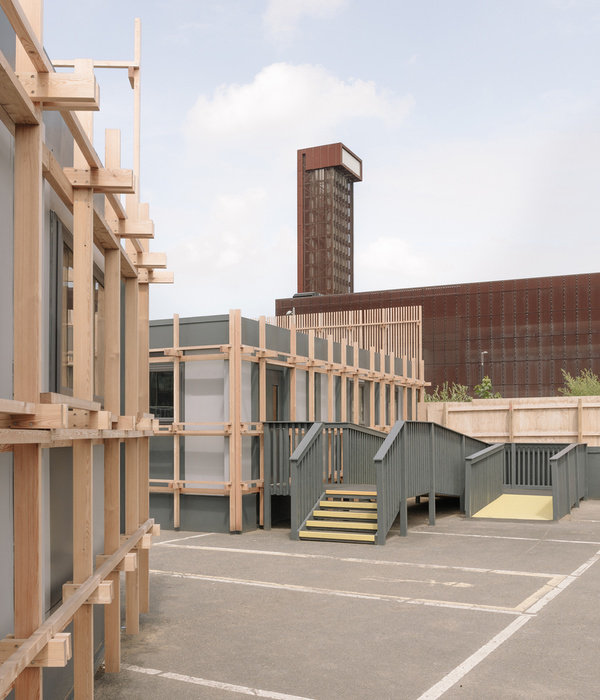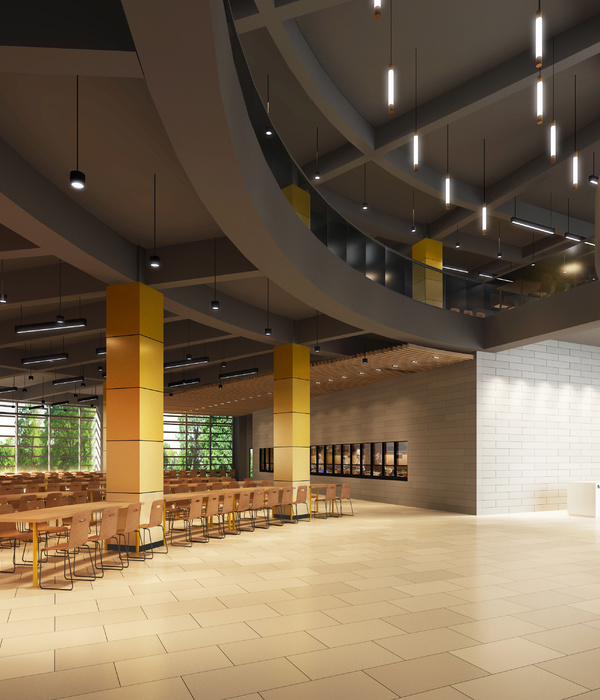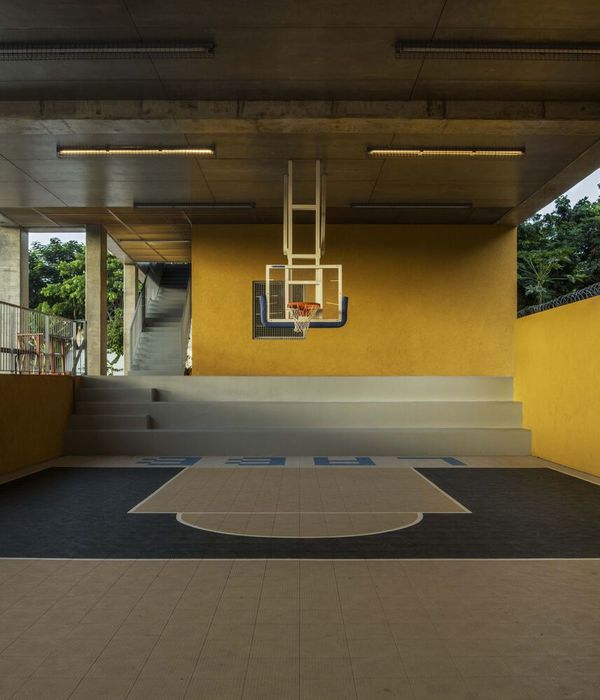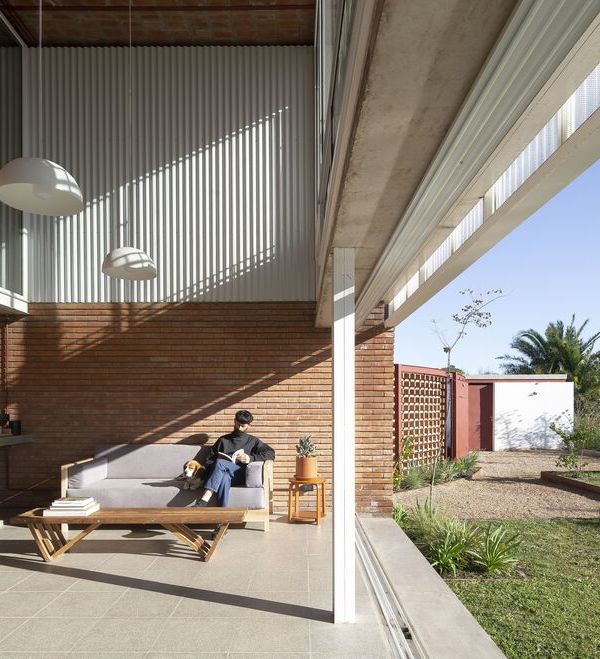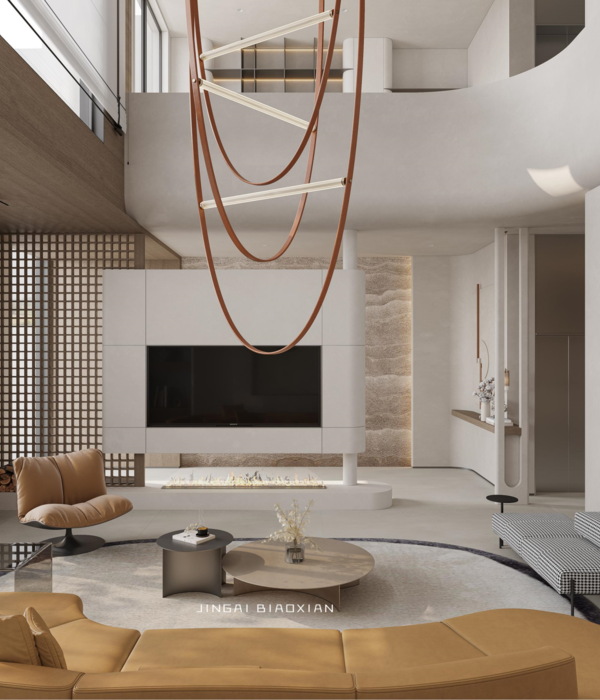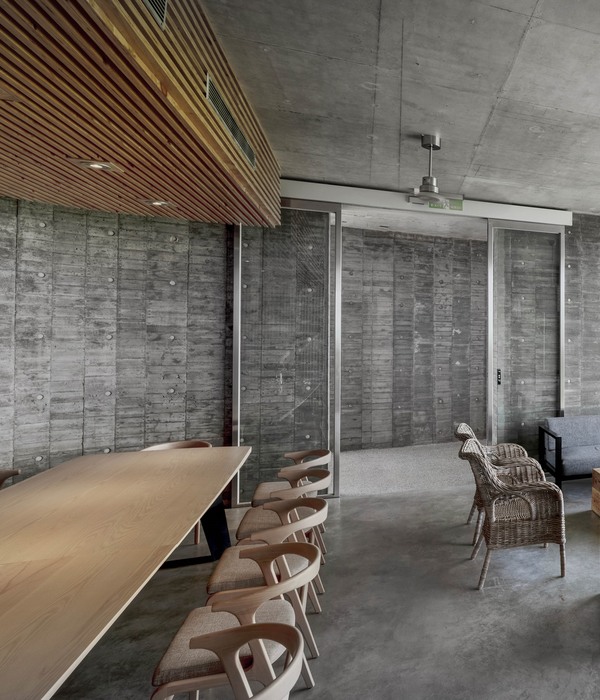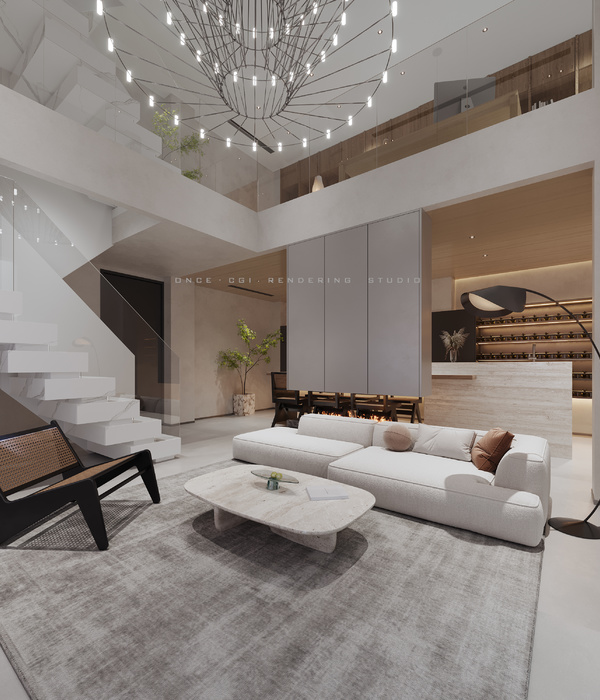Architects:KOMPAS
Area :585 m²
Year :2021
Photographs :Vincent Hecht, Munemasa-Takahashi
Landscape :N-tree, N-tree, Takeshi Nagasaki
MEP :MOCHIDA
Lighting :Tokosha, Tokosha, Takumi Fujiwara
Structure :yasuhirokaneda STRUCTURE
Client : Nishiji Inc. + Kanda & Oliveira
Curtain : Akane Moriyama
Contractor : Aoki koumuten
City : Funabashi
Country : Japan
The project site locates along Chiba-Kaido Avenue in the historical part of Nishifunabashi, Chiba, near the Sengen Shrine on the hill with lush pine forests. The client, an art collector operating a real estate business, planned to build a new building on his parents’ property to accommodate his family’s residence and his company’s galleries & offices. Besides his parents’ house on the northern end of the property, most areas of the linear site closer to the road were relatively unplanned, with an old warehouse building and car parks mixed in the lush vegetation. Thus, our first approach was to organize the entire site so that the two families’ lives and the workspaces coexist comfortably, arranging site circulation and developing a sloped garden moderating the level differences between the two buildings.
The new building accommodates garages in the middle of GF and the residence on the quiet northern side facing the garden. The galleries & offices are vertically consolidated on the southern side towards the national road to be the main face of the building. Interpreting the client’s visions to this place, such as cultural commitment to the neighborhoods, attraction to external visitors, and utilization of suburban potentials, we aimed to incorporate publicness and versatility into the new building together with attractive design, like ‘museum with a house’ rather than ‘house with galleries.’
Following the memories of the old warehouse building that had existed from his grandparents’ generation on the site, the custom-designed kawara, traditional roofing tiles, are used for façade cladding. Kuroibushi kawara, a blackened type resistant to salt damages, forms a solid appearance to protect the collections and the residents’ living. The custom kawara tile is designed to achieve two façade types with one shape, shingles and louvers, by changing its orientation and fixture. The kawara louvers partially open the solid shingle façade to incorporate filtered daylights and views with privacy control from the road.
On top of the kawara volume, the north-facing sawtooth roofs towards the pine forests of the shrine take abundant northern daylights desirable to art spaces into the building. The staggered building volume by timber construction is elevated above the washed concrete mass resembling a castle base. The twist of the two structural grids, timber structure oriented to the true north over the concrete structure following the site geometry, creates various interstitial spaces such as canopies and terraces distributed throughout the building and characterizes the spatial experiences.
While the southern side of the building containing three floors of the galleries/offices stands out in the urban fabric, the building volume steps down towards the north following the building code and transitions to the residential scale towards the garden. The roof pitch of the seven sawtooth roof units varies according to each height and internal usages to incorporate appropriate daylights. Their structural framing around the northern windows forms Vierendeel trusses to allow unusually long-span spaces as timber construction.
The southern three steep roofs function as skylights filling full of daylights into the 3F Gallery. The northern three gentle roofs play the role of residential windows providing views towards the sky and the garden besides stable brightness like an artist’s atelier. The central outdoor roof covers the multi-purpose terrace on 2F for various usages such as an exhibition/event space for the galleries or a kids’ playground, which functions as a shortcut path to the workspaces from the living room as well as a threshold to keep a comfortable distance between public and private.
As the structural system and the daylight condition transition, the spatial characters vertically transition from the rough and closed spaces like a cave on GF to the bright spaces open to the sky under the roof. Considering the wide range of the client’s collection from contemporary art to antique, and possible operations in the future, various interstitial spaces are planned for flexible usages and potential exhibition spaces in addition to the main galleries. Extending the journeys to the spacious outdoor terraces and the external landscape, visitors will enjoy strolling around and experiencing dynamic spatial sequences with various materiality and daylights.
This new cluster with the kawara façade and the sawtooth roofs begins a new era in this historical site as a generous field to comfortably mix artworks, residents, and visitors. To our delights, beyond the original idea of building just for the private collection, the encouraged client ended up launching a new art business utilizing this building to bring more visitors and public exposure. We hope this architecture to be the reliable base for art and culture appealing to the world, besides supporting joyful and abundant daily life like living in a museum.
▼项目更多图片
{{item.text_origin}}


